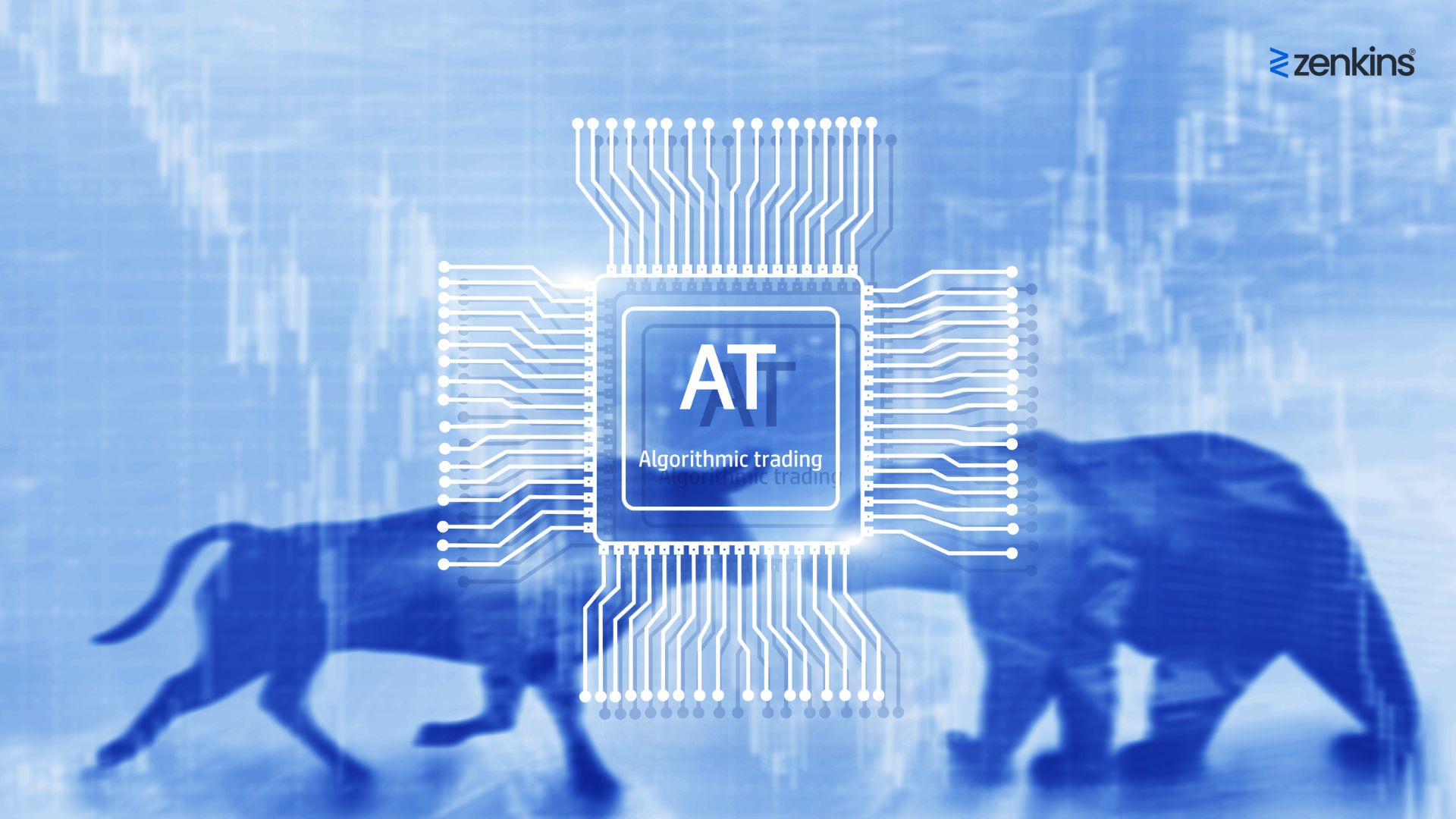Algorithmic Trading Software: Enhancing Investment Strategies
Table of Contents
Algorithmic trading software has revolutionized the financial markets, offering investors sophisticated tools to enhance their investment strategies. By leveraging advanced algorithms and automated processes, algorithmic trading software enables traders to execute trades at lightning-fast speeds and make data-driven decisions. This article explores the world of algorithmic trading software, highlighting its advantages, key components, and the process of building effective trading algorithms. We will also delve into risk management considerations, and successful trading strategies, and explore the future trends and innovations shaping the field. Whether you are a seasoned investor or a novice trader, understanding algorithmic trading software is crucial to staying competitive in today’s rapidly evolving financial landscape.
Introduction to Algorithmic Trading Software
What is Algorithmic Trading?
Algorithmic trading, also known as algo trading, is a method of executing trades in financial markets using computer algorithms. These algorithms follow predefined instructions to automatically place trades based on a set of predefined criteria, such as price, volume, or timing. In simple terms, it’s like having a robot trader that can analyze market data and execute trades without human intervention.
Evolution and Importance of Algorithmic Trading Software
Algorithmic trading has come a long way since its inception in software development. Initially, it was limited to large financial institutions with sophisticated trading systems. However, with advancements in technology and increased accessibility, algorithmic trading software has become more widely available to individual investors.
The importance of algorithmic trading software lies in its ability to process vast amounts of data in real-time, allowing traders to make faster and more informed investment decisions. It also helps eliminate human errors and emotional bias that can often hinder traditional manual trading.
Advantages of Algorithmic Trading Strategies
Increased Speed and Efficiency
One of the key advantages of algorithmic trading strategies is their speed and efficiency. Computers can analyze market data and execute trades in milliseconds, far faster than any human trader. This speed advantage can be crucial in capturing fleeting opportunities and avoiding slippage.
Reduced Human Error and Emotional Bias
Humans are prone to errors, especially when it comes to analyzing complex market data and making split-second trading decisions. Algorithmic trading software eliminates this factor by executing trades based on predefined rules and algorithms. It removes emotional bias from the equation, ensuring trades are executed objectively and based on data-driven analysis.
Access to Multiple Markets and Instruments
Another advantage of algorithmic trading software is its ability to simultaneously analyze and trade across multiple markets and instruments. It can monitor and execute trades in stocks, futures, options, and more, enabling traders to diversify their portfolios and capitalize on opportunities in various markets.
Key Components of Algorithmic Trading Software
Data Collection and Analysis
Data collection and analysis are the foundation of algorithmic trading software. It involves gathering relevant market data, such as price feeds, volume information, and news updates, and processing it to identify potential trading opportunities.
Algorithm Development
Algorithm development is the process of creating trading strategies using mathematical models, statistical analysis, and technical indicators. Traders need to design algorithms that align with their investment goals, risk tolerance, and trading styles.
Order Execution and Management
Once the algorithms are developed, the software handles the order execution and management. It automatically sends buy and sell orders to the market, monitors trade execution, manages risk, and adjusts positions as required.
How to effectively integrate algorithmic trading software into your investment strategy
Integrating algorithmic trading software into your investment strategy can be a powerful way to enhance your trading decisions and execution. Here’s a step-by-step guide on how to do it effectively:
Understand Algorithmic Trading:
Begin by gaining a deep understanding of what algorithmic trading is. Research the basic concepts, terminologies, and the benefits it offers.
Define Your Investment Goals:
Clearly define your investment objectives and risk tolerance. Algorithmic trading can be customized to various strategies, so knowing your goals is crucial.
Choose the Right Algorithmic Trading Software:
There are various algorithmic trading platforms available. Research and select one that aligns with your goals and is user-friendly.
Learn Algorithmic Programming Languages:
Familiarize yourself with programming languages commonly used in algorithmic trading, such as Python or R. These languages enable you to write and customize trading algorithms.
Develop a Strategy:
Decide on a trading strategy that suits your risk profile. Common strategies include trend-following, mean-reversion, and arbitrage.
Backtesting:
Before deploying your algorithm, backtest it using historical data to see how it would have performed in the past. This step helps in refining and optimizing your strategy.
Risk Management:
Implement robust risk management protocols within your algorithm. This includes setting stop-loss orders, position sizing, and portfolio diversification.
Real-Time Data Feed:
Connect your algorithmic trading software to a real-time data feed to ensure it’s making decisions based on up-to-date information.
Paper Trading:
Before risking real capital, deploy your algorithm in a paper trading environment to see how it performs in real-time without actual money involved.
Live Trading:
Once you’re satisfied with the performance during paper trading, transition to live trading with a small amount of capital. Monitor its performance closely.
Continuous Monitoring and Optimization:
Continuously monitor your algorithm’s performance and make necessary adjustments. Financial markets are dynamic, and strategies that worked before may need adaptation.
Stay Informed:
Stay updated on market news, economic events, and changes in regulations that might affect your trading strategy. Algorithmic trading doesn’t eliminate the need for market awareness.
Security Measures:
Ensure that your algorithmic trading software and trading accounts are secure. Use strong passwords, two-factor authentication, and follow best security practices.
Emotional Discipline:
One of the benefits of algorithmic trading is eliminating emotional bias. Stick to your strategy and avoid making impulsive decisions based on fear or greed.
Legal and Tax Compliance:
Be aware of the legal and tax implications of algorithmic trading in your jurisdiction. Consult a financial advisor or tax professional if needed.
Evaluate and Adjust:
Periodically review your algorithm’s performance and make adjustments as necessary. Markets change, and what worked yesterday may not work tomorrow.
Seek Professional Advice:
If you’re unsure about any aspect of algorithmic trading, consider seeking advice from a financial advisor or a professional with expertise in algorithmic trading.
Tips for selecting the right algorithmic trading software for your needs
Selecting the right algorithmic trading software is a crucial step in implementing an effective trading strategy. Here are some tips to help you choose the software that best suits your needs:
Define Your Objectives:
Start by clearly defining your trading objectives. Are you looking for high-frequency trading, day trading, or long-term investing? Your objectives will determine the type of software you need.
Ease of Use:
Choose software that matches your technical proficiency. Some platforms are user-friendly and require no coding knowledge, while others are more complex and require programming skills.
Supported Markets:
Ensure that the software supports the markets you intend to trade in. Not all platforms cover all asset classes or global markets.
Backtesting Capabilities:
Backtesting is essential for evaluating the performance of your trading strategies. Look for software that offers robust backtesting features with access to historical data.
Customization:
Consider how customizable the software is. Can you easily adjust and modify trading algorithms to match your specific strategies and risk management rules?
Real-Time Data Feeds:
Access to real-time data is critical for algorithmic trading. Make sure the software integrates with reliable data providers or offers its own real-time data feed.
Risk Management Features:
Look for software that provides comprehensive risk management tools, including stop-loss orders, position sizing, and portfolio risk analysis.
Algorithm Library:
Some software platforms offer pre-built algorithm libraries or marketplace integrations where you can access and purchase trading strategies developed by others.
Community and Support:
Check if the software has an active user community or customer support. Having access to resources and assistance can be invaluable, especially for beginners.
Costs and Fees:
Understand the pricing structure of the software. Some charge licensing fees, while others have a subscription-based model. Consider how fees may impact your trading profitability.
Latency and Execution Speed:
For high-frequency trading, low latency and fast execution speeds are critical. Ensure that the software can handle the speed required for your strategy.
Broker Integration:
Verify that the software can connect to your preferred brokerage or trading platform. Compatibility is essential for executing your trades seamlessly.
Security and Reliability:
Security is paramount when it comes to trading software. Ensure that the platform follows industry-standard security practices to protect your data and funds.
Scalability:
If you plan to scale up your trading operations, choose software that can accommodate increased trading volumes without performance degradation.
Trial Period:
Whenever possible, opt for software that offers a free trial period. This allows you to test its features, performance, and suitability for your needs before committing.
Regulatory Compliance:
Ensure that the software complies with the regulatory requirements of your jurisdiction. Failure to do so could lead to legal issues.
Reviews and Recommendations:
Read reviews and seek recommendations from experienced traders or trading communities. Hearing about others’ experiences can provide valuable insights.
Future Updates and Development:
Investigate the software’s track record in terms of updates and ongoing development. A platform that receives regular updates is more likely to remain relevant.
Compatibility:
Check if the software is compatible with your operating system and hardware. Some trading software is specific to Windows, while others work on multiple platforms.
Data Analytics and Reporting:
Look for software that offers advanced data analytics and reporting capabilities to help you analyze and optimize your trading strategies.
Risk Management and Limitations of Algorithmic Trading
Controlling Market and Execution Risks
When it comes to algorithmic trading, managing risks becomes paramount. While the software may be efficient at analyzing large amounts of data and executing trades at lightning speed, it’s important to remember that markets are unpredictable beasts. One key challenge is controlling market risks, as sudden market fluctuations or unexpected events can create volatility that algorithms may struggle to navigate. Additionally, execution risks, like slippage or order delays, can impact the effectiveness of trades. It’s crucial for traders to set proper risk parameters and continuously monitor the algorithm’s performance to mitigate these risks.
Overcoming Limitations and Drawbacks
Algorithmic trading has its limitations, like any other tool. One common drawback is over-optimization, where an algorithm is tailored too specifically to historical data and fails to adapt to changing market conditions. It’s important to strike a balance between backtesting and forward-thinking strategies. Another limitation is the potential for technical glitches or system failures. Even the most sophisticated algorithms can encounter issues, so it’s necessary to have robust contingency plans in place. These limitations can be overcome through continuous monitoring, regular updates, and adaptation to market dynamics.
Regulatory and Ethical Considerations
Algorithmic trading has not escaped the watchful eye of regulators. As automated trading gains popularity, regulatory bodies are keen on ensuring fairness and preventing market manipulation. Regulatory guidelines are in place to address issues such as pre-trade risk controls, algorithmic trading practices, and transparency in execution. Ethical considerations also come into play, as the impact of algorithms on markets and society becomes more pronounced. Striking the right balance between profit-driven strategies and ethical behavior is essential to maintaining trust and integrity in algorithmic trading.
Future Trends and Innovations in Algorithmic Trading Software
Artificial Intelligence and Machine Learning in Trading
The integration of artificial intelligence and machine learning into algorithmic trading is set to revolutionize the field. These technologies enable algorithms to continually learn and adapt, improving their decision-making capabilities in dynamic markets. AI and machine learning can unlock hidden insights in vast datasets, leading to more accurate predictions and better trading outcomes.
Integration of Big Data Analytics
The abundance of data available in today’s digital age presents immense opportunities for algorithmic traders. Big data analytics allows algorithms to process and analyze enormous amounts of structured and unstructured data, including news sentiment, social media trends, and economic indicators. By incorporating these insights into their trading strategies, traders can gain a deeper understanding of market dynamics and make more informed investment decisions.
Blockchain Technology and Cryptocurrency Trading
Blockchain technology, with its decentralized and transparent nature, is making its mark in the world of algorithmic trading, particularly in the realm of cryptocurrency trading. Blockchain-based platforms provide secure and efficient transaction processing, eliminating the need for intermediaries. Smart contracts executed on blockchain networks enable automated trading and settlement, enhancing the speed and reliability of cryptocurrency trading algorithms. As the cryptocurrency market continues to evolve, blockchain technology is poised to play a significant role in algorithmic trading.
In conclusion, algorithmic trading software has become an indispensable tool for modern investors, offering a range of benefits from increased speed and efficiency to reduced human error. By harnessing the power of data analysis and automation, traders can unlock new opportunities and stay ahead of market trends.
However, it is important to recognize the limitations and risks associated with algorithmic trading and implement robust risk management strategies. As technology continues to advance, we can expect to see even more innovative approaches, such as artificial intelligence and blockchain integration, shaping the future of algorithmic trading software. By staying informed and adapting to these developments, investors can continue to enhance their investment strategies and stay competitive in the dynamic world of finance.




